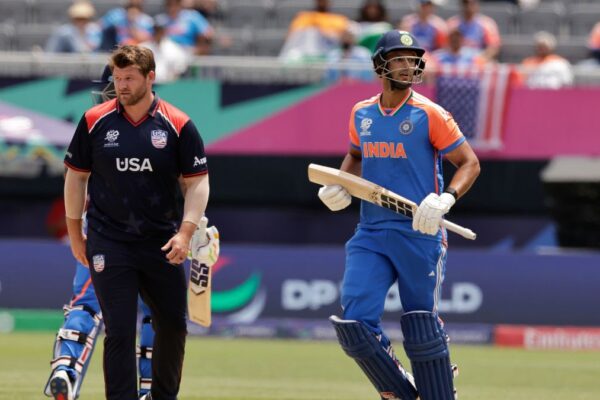Representational image of U.S. cricket fans waving flags prior to a ICC Men’s T20 Cricket World Cup match in Dallas, Texas. | Photo Credit: Getty Images via AFP In the 1950 football World Cup, US, a minor power in the game defeated England 1-0. US was characterised as “a team of lower-league dropouts and amateurs.” The win barely registered at home. There was a lone US reporter present and the result was received “with massive indifference,” according to a later writer. It did not signal a football revival nor was it the starting point of a popular upsurge in the game. To be fair, it wasn’t hyped thus, unlike the T20 World Cup which many see as the game coming home to the country where the first international was played in 1844. Following the U.S. win over Pakistan, the New York Times headline said, US Scores Historic Cricket Win, but only Pakistan Notices. Once again America seemed oblivious to a sporting feat. A special advisor to the Yankees, the professional baseball team, said the India-Pakistan match reminded him of the Dominican baseball league. It may have been a compliment, but I am no expert on baseball, just as the local reporter who said India beat Pakistan 119-113 is no expert on cricket. Not yet ready It might be politically incorrect to say this, but America isn’t ready to embrace cricket yet. The picture of a young boy in Michigan or New York putting his oval football away forever and carrying a cricket bat is a difficult one to conjure up. For starters, the International Cricket Council needs to market the game better, take it to the grassroots with more passion, and explore all avenues including making the commentary and visual presentation more attractive and inclusive. Right now it seems to have a single-focus policy: India versus Pakistan. Much of the criticism of the drop-in pitches could have been avoided had the ICC paid more attention to the amount of time required to nurse these to international standards. Low-scoring matches make T20 interesting, but the possibility of injury doesn’t. As former England captain Michael Vaughan said, “Trying to sell the game in the States is great, but for players to have to play on substandard surfaces is unacceptable.” To attract an American crowd (as opposed to an immigrant one), cricket should be presented in a manner Americans can identify with. It can start with television which is basically for the converted who can put up with the inanities and irrelevancies of the Indian commentators. Special set of skills Americans need more statistics, more background, more excitement (as opposed to loudness) and better conversation generally. To transfer a culture and a philosophy from an established community to one that is emerging requires a special set of skills. Just as the ICC must first coach the coaches who can then take the game forward in the US, it must spend time with the TV channels on how best to attract a new audience without losing the old one. When the American magazine Sports Illustrated sent a baseball writer to England in 1961 to write about this game called cricket, he wrote, “To appreciate cricket, an American must first understand it.” Over six decades later, that is still key. Decades of American jokes (“Cricket is basically baseball on Valium,” said actor Robin Williams) have to be countered in the public imagination with a suggestion that those who can’t enjoy the game are philistines. The ICC might have missed a trick in not involving Hollywood and sports stars in a celebrity-obsessed society. Genuine cricket lovers like Mark Wahlberg (“I love the sport, could have played it professionally”) and Gerard Butler, both of whom had stakes in teams in the Caribbean Premier League in the early days, John Hamm, Daniel Radcliffe, Ed Sheeran, Russell Crowe are some examples. Perhaps NBA and NFL stars could have been requisitioned too. Lebron James as brand ambassador? Just a thought… After scoring the winning goal for the US against England, Haiti-born Joe Gaetjens returned to his country and soon disappeared. He was killed, it is believed, by the death squad of his country’s President. Saurabh Netravalkar, hero of the Super over in US’s defeat of Pakistan, will return to his Oracle office in California when the World Cup stint is done. The difference is significant; not for the first time, sport is writing a chapter in our history.






